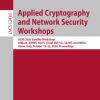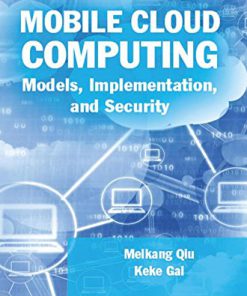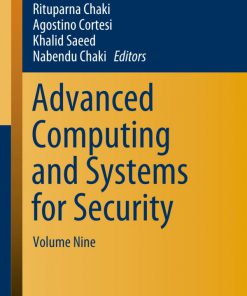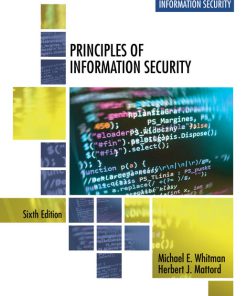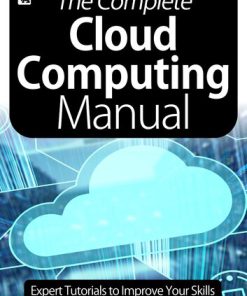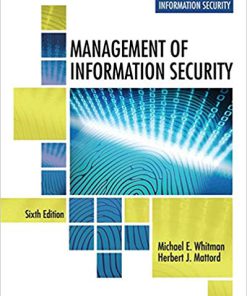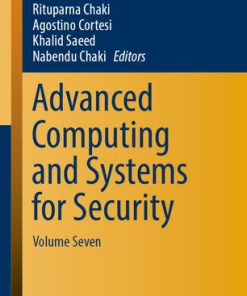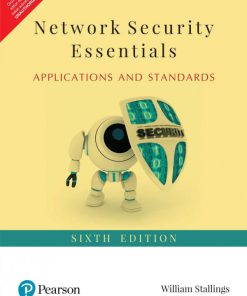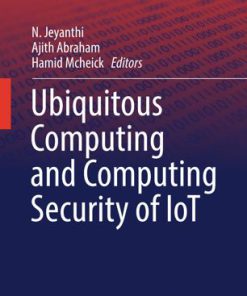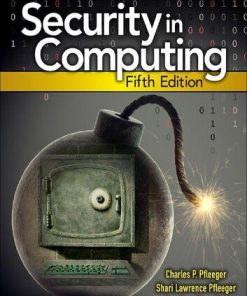Security in Computing 6th Edition by Charles Pfleeger, Shari Lawrence Pfleeger, Lizzie Coles-Kemp 0137891252 9780137891252
$50.00 Original price was: $50.00.$25.00Current price is: $25.00.
Security in Computing 6th Edition by Charles Pfleeger, Shari Lawrence Pfleeger, Lizzie Coles-Kemp – Ebook PDF Instant Download/DeliveryISBN: 0137891252, 9780137891252
Full download Security in Computing 6th Edition after payment.
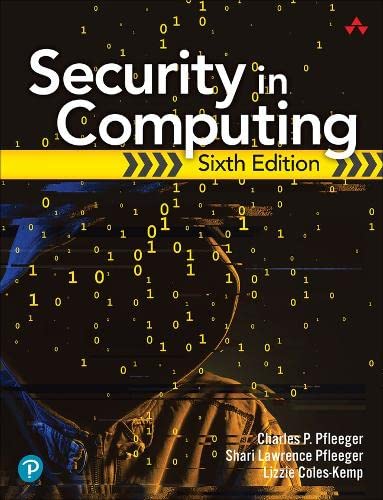
Product details:
ISBN-10 : 0137891252
ISBN-13 : 9780137891252
Author: Charles Pfleeger, Shari Lawrence Pfleeger, Lizzie Coles-Kemp
The Art of Computer and Information Security: From Apps and Networks to Cloud and Crypto Security in Computing, Sixth Edition, is today’s essential text for anyone teaching, learning, and practicing cybersecurity. It defines core principles underlying modern security policies, processes, and protection; illustrates them with up-to-date examples; and shows how to apply them in practice. Modular and flexibly organized, this book supports a wide array of courses, strengthens professionals’ knowledge of foundational principles, and imparts a more expansive understanding of modern security. This extensively updated edition adds or expands coverage of artificial intelligence and machine learning tools; app and browser security; security by design; securing cloud, IoT, and embedded systems; privacy-enhancing technologies; protecting vulnerable individuals and groups; strengthening security culture; cryptocurrencies and blockchain; cyberwarfare; post-quantum computing; and more. It contains many new diagrams, exercises, sidebars, and examples, and is suitable for use with two leading frameworks: the US NIST National Initiative for Cybersecurity Education (NICE) and the UK Cyber Security Body of Knowledge (CyBOK). Core security concepts: Assets, threats, vulnerabilities, controls, confidentiality, integrity, availability, attackers, and attack types The security practitioner’s toolbox: Identification and authentication, access control, and cryptography Areas of practice: Securing programs, user–internet interaction, operating systems, networks, data, databases, and cloud computing Cross-cutting disciplines: Privacy, management, law, and ethics Using cryptography: Formal and mathematical underpinnings, and applications of cryptography Emerging topics and risks: AI and adaptive cybersecurity, blockchains and cryptocurrencies, cyberwarfare, and quantum computing Register your book for convenient access to downloads, updates, and/or corrections as they become available. See inside book for details.
Security in Computing 6th table of contents:
1. Introduction
1.1 What Is Computer Security?
1.2 Threats
1.3 Harm
1.4 Vulnerabilities
1.5 Controls
1.6 Conclusion
1.7 What’s Next?
1.8 Exercises
2. Toolbox: Authentication, Access Control, and Cryptography
2.1 Authentication
2.2 Access Control
2.3 Cryptography
2.4 Conclusion
2.5 Exercises
3. Programs and Programming
3.1 Unintentional (Nonmalicious) Programming Oversights
3.2 Malicious Code—Malware
3.3 Countermeasures
3.4 Conclusion
3.5 Exercises
4. The Internet—User Side
4.1 Browser Attacks
4.2 Attacks Targeting Users
4.3 Obtaining User or Website Data
4.4 Mobile Apps
4.5 Email and Message Attacks
4.6 Conclusion
4.7 Exercises
5. Operating Systems
5.1 Security in Operating Systems
5.2 Security in the Design of Operating Systems
5.3 Rootkits
5.4 Conclusion
5.5 Exercises
6. Networks
6.1 Network Concepts
Part I—War on Networks: Network Security Attacks
6.2 Threats to Network Communications
6.3 Wireless Network Security
6.4 Denial of Service
6.5 Distributed Denial of Service
Part II—Strategic Defenses: Security Countermeasures
6.6 Cryptography in Network Security
6.7 Firewalls
6.8 Intrusion Detection and Prevention Systems
6.9 Network Management
6.10 Conclusion
6.11 Exercises
7. Data and Databases
7.1 Introduction to Databases
7.2 Security Requirements of Databases
7.3 Reliability and Integrity
7.4 Database Disclosure
7.5 Data Mining and Big Data
7.6 Conclusion
7.7 Exercises
8. New Territory
8.1 Introduction
8.2 Cloud Architectures and Their Security
8.3 IoT and Embedded Devices
8.4 Cloud, IoT, and Embedded Devices—The Smart Home
8.5 Smart Cities, IoT, Embedded Devices, and Cloud
8.6 Cloud, IoT, and Critical Services
8.7 Conclusion
8.8 Exercises
9. Privacy
9.1 Privacy Concepts
9.2 Privacy Principles and Policies
9.3 Authentication and Privacy
9.4 Data Mining
9.5 Privacy on the Internet
9.6 Email and Message Security
9.7 Privacy Impacts of Newer Technologies
9.8 Conclusion
9.9 Exercises
10. Management and Incidents
10.1 Security Planning
10.2 Business Continuity Planning
10.3 Handling Incidents
10.4 Risk Analysis
10.5 Physical Threats to Systems
10.6 New Frontiers in Security Management
10.7 Conclusion
10.8 Exercises
11. Legal Issues and Ethics
11.1 Protecting Programs and Data
11.2 Information and the Law
11.3 Rights of Employees and Employers
11.4 Redress for Software Failures
11.5 Computer Crime
11.6 Ethical Issues in Computer Security
11.7 An Ethical Dive into Artificial Intelligence
11.8 Incident Analyses with Ethics
11.9 Conclusion
11.10 Exercises
12. Details of Cryptography
12.1 Cryptology
12.2 Symmetric Encryption Algorithms
12.3 Asymmetric Encryption
12.4 Message Digests
12.5 Digital Signatures
12.6 Quantum Key Distribution
12.7 Conclusion
13. Emerging Topics
13.1 AI and Cybersecurity
13.2 Blockchains and Cryptocurrencies
13.3 Offensive Cyber and Cyberwarfare
13.4 Quantum Computing and Computer Security
13.5 Conclusion
People also search for Security in Computing 6th:
what is information security in computing
foundation of security in computing ktu notes
foundation of security in computing
foundation of security in computing ktu question paper
ktu s7 security in computing notes
Tags: Security, Computing, Charles Pfleeger, Shari Lawrence Pfleeger, Lizzie Coles-Kemp
You may also like…
Computers - Applications & Software
Mobile cloud computing models implementation and security 1st Edition Keke Gai
Computers - Computer Certification & Training
Computers - New to Computing
Computers - Computer Certification & Training
Management of Information Security 6th Edition Michael E. Whitman
Computers - Security
Network Security Essentials Applications and Standards 6th Edition William Stallings
Computers - Computer Science
Security in Computing: 5th Edition Charles P. Pfleeger And Shari Lawrence Pfleeger



